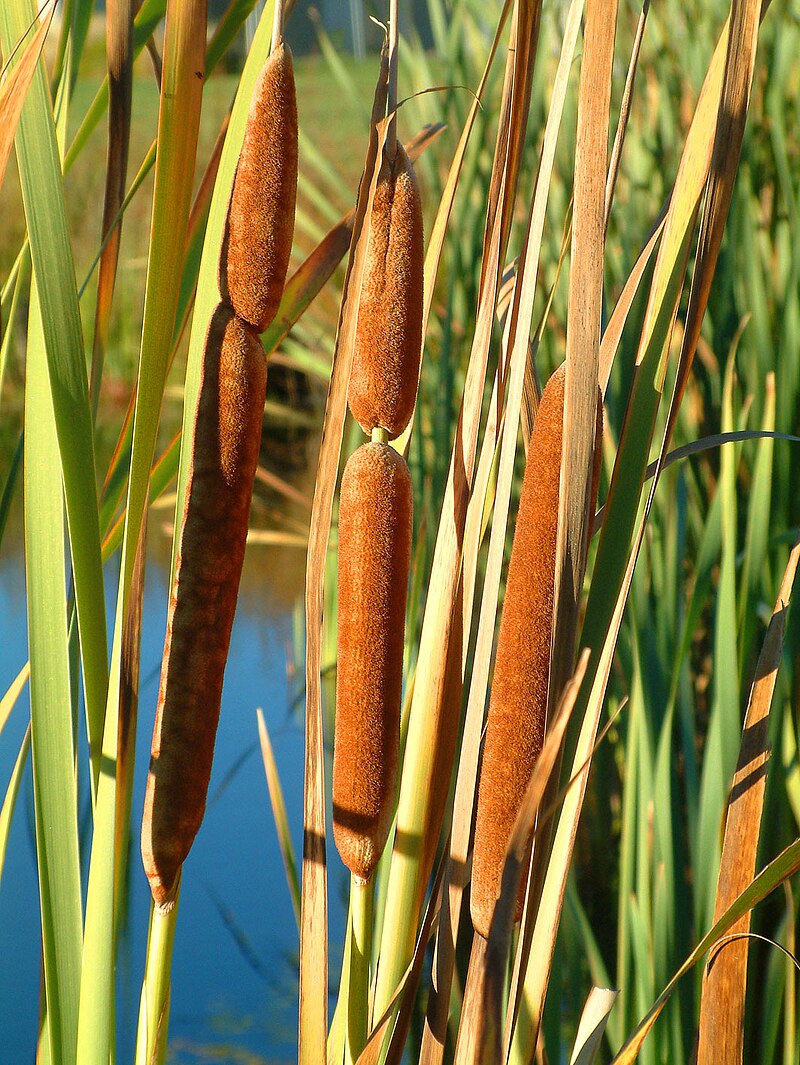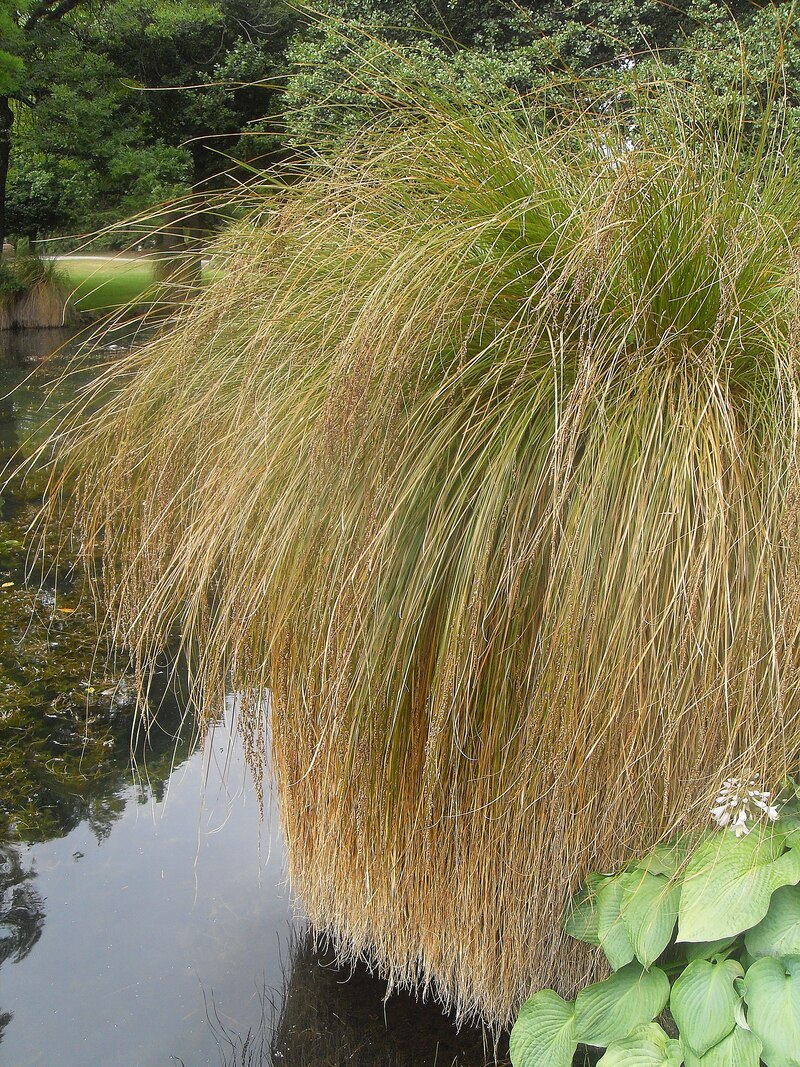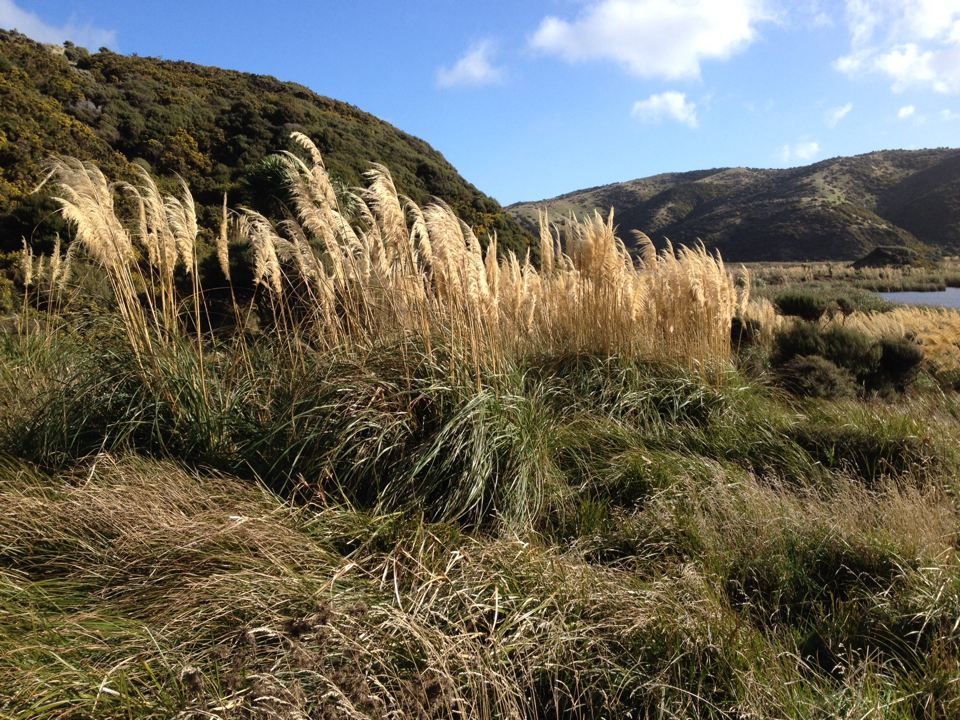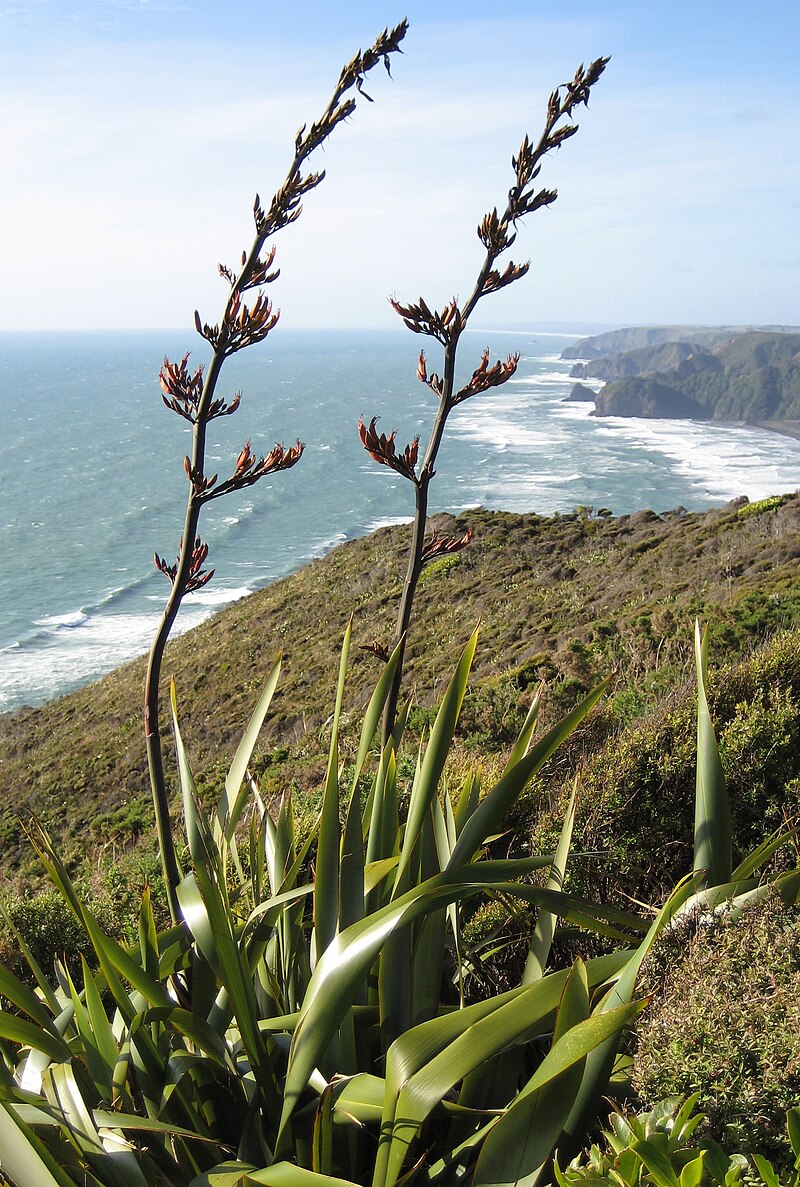Wetland plants have evolved specialized adaptations to thrive in saturated or submerged environments. Some have air-filled tissues to transport oxygen to their roots, while others have modified leaf structures or reproductive strategies that allow them to flourish where most plants would perish.
Sadly, over 90% of New Zealand's original wetlands have been drained or modified since human settlement. The plants featured here represent some of our most remarkable wetland species, many of which can be incorporated into rain gardens, pond edges, or wetland restoration projects.

Raupō
Typha orientalis
Tall wetland plant with distinctive brown flower spikes that was traditionally used for thatching, weaving, and as a food source.
Learn more
Pūrei
Carex secta
Distinctive sedge that forms elevated "pedestals" in wetlands, providing important habitat structure and dramatic landscape elements.
Learn more
Kuta
Eleocharis sphacelata
Tall, hollow-stemmed rush growing in shallow water that was traditionally used for making woven mats, panels, and containers.
Learn more






